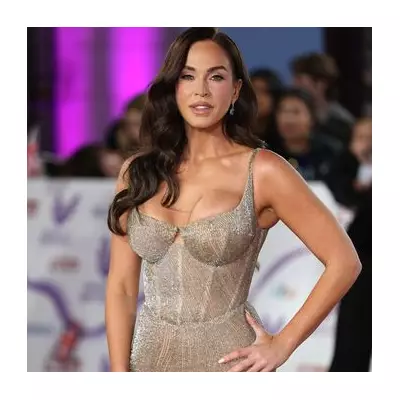
The Unspoken Rules of Ultra-Wealthy Fashion
In the world of high fashion, a seismic shift is underway. The era of flamboyant logos and conspicuous branding is being quietly usurped by a more subtle aesthetic known as 'quiet luxury'. This trend, which has become a hot topic on platforms like TikTok, revolves around the idea that true wealth whispers rather than shouts.
Fashion experts speaking exclusively to the Daily Mail have revealed the exclusive designers favoured by the wealthiest one percent. The conversation gained momentum after content creator Emilie Rose went viral for her bold declarations, labelling celebrity-beloved brands like Louis Vuitton and Dior as 'not rich', while anointing Zegna, Tom Ford, and Yves Saint Laurent as 'rich', and Loro Piana as 'very rich'.
The Succession Effect and the Rise of Stealth Wealth
The fictional Roy family from HBO's hit television series Succession became unlikely style icons, frequently wearing high-end, logo-less brands that perfectly embodied this understated philosophy. This portrayal helped catapult quiet luxury into the mainstream consciousness.
Social media users are now constantly searching for these 'casual wealth symbols' that signify class without effort. These signifiers include pricey Emi Jay hair clips, impeccably maintained manicures, and, most importantly, attire with no designer logos or names visible at all.
Leading the charge is the Italian brand Loro Piana, owned by LVMH, the parent company of Louis Vuitton. The brand has become legendary for its exorbitantly priced basics, including an $875 plain white t-shirt and a $1,400 white button-down shirt, consistently securing its place at the top of any quiet luxury list.
What Truly Signals Wealth? Experts Weigh In
To decipher the true markers of a high-net-worth individual, the Daily Mail consulted fashion insiders. Anthony Bolognese, owner of the custom suiting company Capitol Hill Clothiers in Washington, D.C., has a unique vantage point. He frequently works with ultra-wealthy clients, even venturing into their closets, which he describes as their 'inner sanctuaries'.
Bolognese is clear that expensive price tags do not automatically equate to elite taste. He notes that shirts with large logos from brands like Balenciaga and Gucci, while costing hundreds of dollars, are not considered truly wealthy. ‘I have only ever seen them hanging in modest apartments of individuals projecting a higher level of success,’ he revealed, describing such items as 'gaudy' and absent from the closets of the genuinely affluent.
Another critical differentiator is fit. The one percent consistently appear better dressed because their clothes are either meticulously tailored or entirely custom-made. ‘The highest net worth individuals I serve are prepared to spend tens of thousands on their seasonal wardrobes,’ Bolognese shared, adding that they often care less about the brand and more about which fabric mill supplies their cashmere.
The New Frontier: Fabric and Fit Over Flashy Labels
The proliferation of convincing super dupes for luxury accessories has made it increasingly difficult to distinguish real wealth from its imitation. Bolognese agreed that today, anyone can wear a convincing Patek Philippe, Audemars Piguet, or Vacheron Constantin replica. Consequently, the focus for those in the know has shifted decisively to superior fabrics and impeccable fit.
Personal stylist Hellana of Styled by Hellana, who previously worked at Harrods, named Brunello Cucinelli—where a single coat can cost $15,000—Totême, and Hermès as the quiet luxury brands adored by high-net-worth individuals. Conversely, she identified Louis Vuitton monogrammed accessories, Balenciaga, Michael Kors, and Coach as brands that suggest someone isn't truly wealthy.
Kay Sides, founder of the fashion brands Roam and Hatch, echoed this sentiment. ‘The people who really know tend to gravitate toward designers whose work speaks quietly but powerfully,’ she said. The industry veteran named The Row, Issey Miyake, Comme des Garçons, Rick Owens, and Maison Margiela as stealth staples. ‘These aren't "look at me" brands, they’re about cut, fabric, and feeling,’ Sides explained. ‘You'll rarely see a wardrobe that's dominated by over-logo'd pieces. A chic, truly luxury closet is almost always high-low: a mix of great quality, easy basics, and a few incredible investment pieces.’





